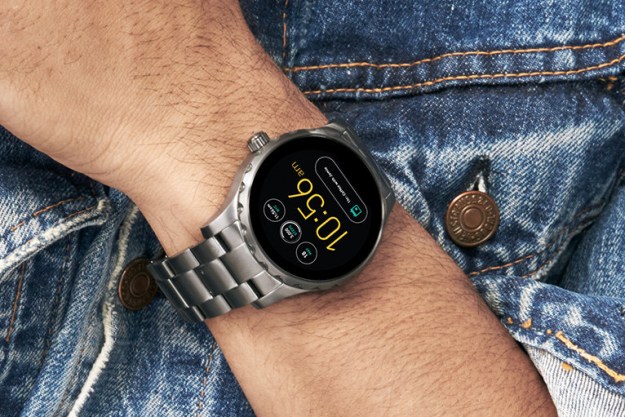These innocent looking glasses could be the future of smart eyewear, mainly because they look like any other pair of spectacles. Designed by Japanese eyewear brand Jins, they’re called the Meme, and they combine the functionality of a fitness tracker with health and safety benefits associated with other smart devices worn in-line with the spine. Jins is well established in Japan and China, but will use the Meme to launch the brand in the U.S. and around the world over the coming year.
According to Jins, the head is the ideal part of the body to monitor movement and posture, while our eyes give away a wealth of information on our health, wellbeing, and state of mind. When you’re tired, you don’t blink as much, for example. The Jins Meme not only tracks body movement and position, but it also knows where we’re looking, how often we blink, and whether we’re about to fall asleep.
Electrodes monitor eye movement
The glasses use a set of accelerometer and velocity sensors in one of the arms, and electrooculography (or EOG) electrodes fitted to three spots on the frame, including the nose pads. Amazingly, these electrodes can track blink duration and eye movements in eight different directions. It’s the first time the tech has been used on a consumer device.
The Jins Meme will be able to tell us when we’re getting tired, or our attention levels are fading.
Many of us already track our sleep patterns using a wearable device, but the Jins Meme will be able to tell us when we’re getting tired, or our attention levels are fading. Although these states can be relatively obvious, we often don’t pay attention to the dangers of losing focus. Jins is already working with auto parts manufacturer Denso to use the Meme to make driving or operating machinery safer. By measuring attention levels, the Jins Meme could also find a home in schools and the workplace, as a way of telling us when to take a break, or if a presentation or lesson is interesting.
The Jins Meme’s companion smartphone app will collate all the data, plus collect information on posture, balance, and the usual step count and calorie burn. In the future, the Jins Meme’s precise motion and eye tracking abilities could even be used as a game controller or a healthcare diagnostic tool.
Another step towards wearable tech gaining mainstream acceptance
Usually, all this tech would be squeezed into a device like Google Glass, Epson’s Moverio, or Sony’s SmartEyeglass. Functional, but not exactly inconspicuous. Jins worked with industrial designer Satoshi Wada, who has been responsible for designs including the Audi A6, on the Meme, and the result is an almost “invisible” piece of wearable tech. It’s this aspect which makes the Meme really exciting, because it’s one of the first steps towards acceptable, mainstream wearable products.
The Jins Meme weighs 36 grams without the lenses, which is the equivalent of Google Glass on its own, and is made from a durable, waterproof material. Initially available in the unisex, classic Wellington design seen here, other versions may be available in the future. The battery inside is charged with a Micro USB cable, and should last around 16 hours, depending on use.
Jins will sell the Meme online, in Japan, and in the U.S., once all the important regulations have been met. The price hasn’t been confirmed, but we’re told it’ll be accessible, compared to other smart eyewear products. Jins will be demonstrating the Meme glasses for the first time at CES, and we’ll bring you a hands-on — or face-on, if you like — report from the Las Vegas show.



